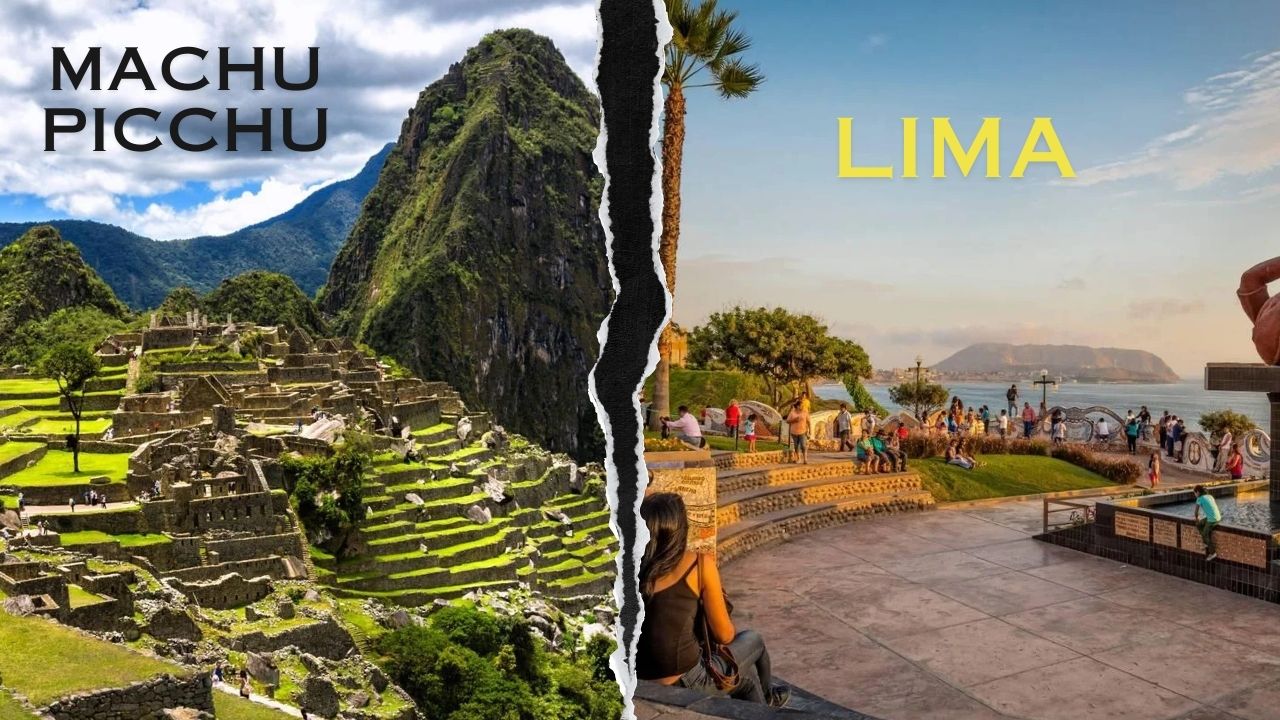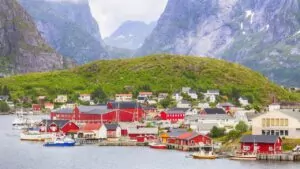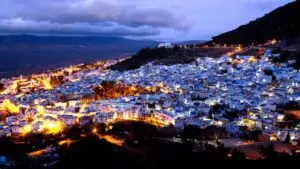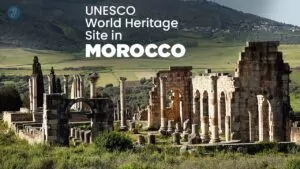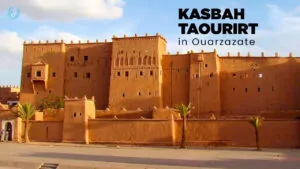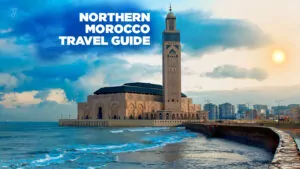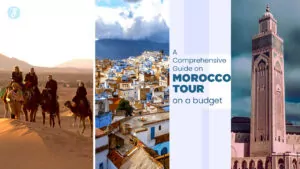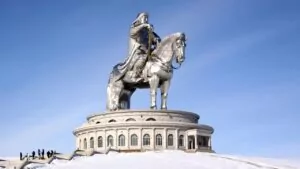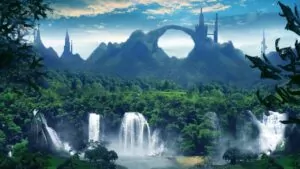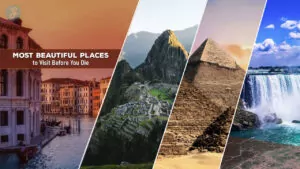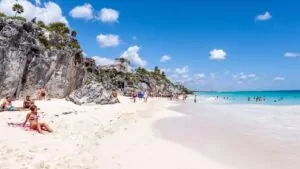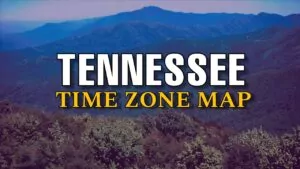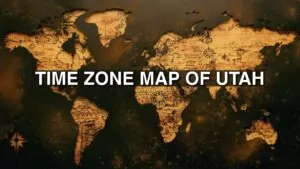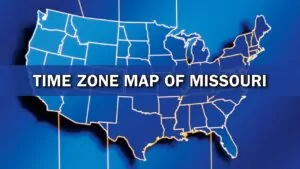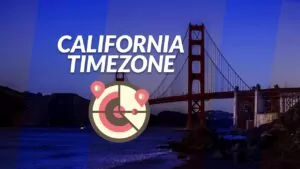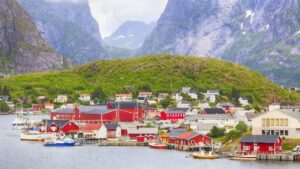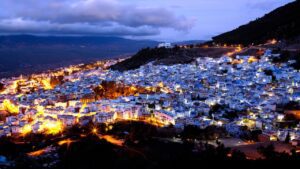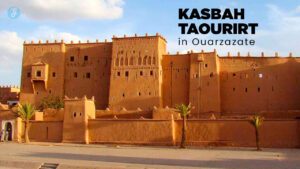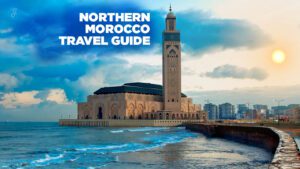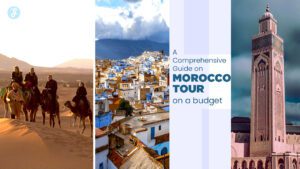Planning a trip from Lima to the mysterious and awe-inspiring Machu Picchu can feel like solving a complex puzzle. You’re eager to witness one of the Seven Wonders of the World but you’re scratching your head over how far it actually is from Peru’s capital city and, more importantly, how you’re going to get there.
Fret not; you’re not alone in this quest!
Did you know that while Machu Picchu seems just a stone’s throw away on the map, clocking in at roughly 503 km as the crow flies from Lima, the journey by land stretches over 1205 km? This fact itself turns your travel planning into an adventure before it even begins.
Our blog post will guide you through each step of this thrilling journey – offering insights into various travel options that suit every type of explorer out there. Are you ready for an unforgettable expedition? Keep reading!
The Essence of Lima and Machu Picchu
Lima dazzles with its bustling streets and rich history. Machu Picchu, hidden high in the Andes, calls to adventurers from around the globe.
Overview of Lima
Lima is the starting point for nearly all trips to Machu Picchu. This city is not just Peru’s capital but also a place where history and modern life mix. You’ll find old Inca paths, stunning cathedrals in the Historic Center of Lima, and places like Miraflores where you can enjoy the Pacific Ocean view.
Food lovers, get ready! Lima is famous for dishes like ceviche and lomo saltado. The city’s love for food shows in its wide range of eateries serving Peruvian cuisine using local ingredients.
After exploring Lima’s rich culture and enjoying some delicious Peruvian dishes, many travelers are eager to see what mysteries Machu Picchu holds. So let’s move on to uncovering insights into this ancient wonder next.
Insights into Machu Picchu
After exploring the bustling streets and culinary delights of Lima, our journey takes us to the awe-inspiring Machu Picchu. High in the Andes Mountains, encircled by verdant vegetation and sheer cliffs, is this ancient Incan citadel.
It’s a sight that draws thousands of outdoor enthusiasts each year. The Incas built it in the 15th century as a sacred religious site or royal estate. Today, it stands as a monument to Incan engineering genius.
Machu Picchu is accessible via various treks, such as the famous Inca Trail, Salkantay Trek, and Lares Trek. Each path offers its own unique blend of stunning landscapes and challenging terrains.
For those less inclined to hike for days, trains from Cusco bring you close to this ancient wonder. Once at Aguas Calientes—the town below Machu Picchu—a short bus ride or a hike up will get you there.
Standing atop these ruins, with mist swirling around mystical stone structures, is an experience unlike any other.
Machu Picchu is not just an attraction; it’s a journey back in time.
How Far is Machu Picchu from Lima: Calculating the Distance
The road from Lima to Machu Picchu is long. If you were a bird, you could fly straight there and cover 503 km easily. But we’re not birds, are we? So, on the ground, it’s a whole different story.
The journey stretches out to 1205 km if you follow the paths laid out by roads and rails.
You might think taking a car would cut down this distance. Well, it does make things a bit faster than the bus. Yet, whether driving or sitting back in a bus seat, prepare for an adventure that spans several hours as you move through changing landscapes from the capital city of Peru to one of its most breathtaking ancient sites.
Navigating from Lima to Machu Picchu: Travel Alternatives
Getting from Lima to Machu Picchu takes a bit of planning. You can’t just hop on a direct flight or bus and get there. But, don’t worry. Here’s a list to help you figure out the best way for you.
- Start with a flight from Lima to Cusco: This is your fastest bet. With airlines like LATAM and Sky Airlines, you’ll spend just about an hour and twenty minutes in the air. It’s a smooth and scenic jump from the coast to the Andes.
- The long bus journey: Love road trips? The bus ride from Lima to Cusco could be for you then. It’s long, around 22 to 27 hours, but it lets you see the changing landscapes of Peru. Plus, it helps your body get used to higher land slowly.
- Driving by car: If you prefer setting your own pace, renting a car could work well. Just remember, it’s over 1,200 km through some tricky mountain roads. Make sure you’re ready for a real driving adventure.
- Taking the train: Once in Cusco, consider taking the train to Aguas Calientes (the town near Machu Picchu). Services like Inca Rail and PeruRail turn this leg of the trip into something special with stunning views of the Sacred Valley.
- Hiking for the adventurous: Feeling bold? Trekking paths like the Inca Trail or Salkantay Trek lead straight to Machu Picchu through breathtaking scenery. It’s tough but unforgettable.
Each option has its charm and challenges, so think about what suits you best! Next up: What happens after arriving in Cusco?
Commute Options from Lima to Cusco
Getting from Lima to Cusco? You’ve got choices! Hop on a bus, catch a flight, or drive yourself. Each way has its own fun and adventure. So, why wait? Dive in to explore more about these cool travel paths!
Bus Journey
Taking a bus from Lima to Cusco is your pocket-friendly choice. It’s a long ride, about 21 to 25 hours, but think of all the cool stuff you’ll see! Landscapes change as you move, showing off Peru’s amazing nature and towns.
Sure, it’s slower than flying, but your wallet will thank you.
Buses here are comfy and have different types for travelers. Some are basic; others feel like flying first class but on the ground. You can sleep, watch movies, or stare out the window.
This journey is not just travel; it’s an adventure through Peru’s heartland. Use this time to relax before exploring more wonders in Cusco and beyond. Additionally, you can also read about- Most Romantic Destinations in the World.
Air Travel
After considering the bus journey, flying might be your next thought. Flights from Lima to Cusco zoom over the Andes and drop you closer to Machu Picchu in just 1 hour and 20 minutes.
Many airlines can take you there, like low-cost carriers or others offering more comfort. Once at Alejandro Velasco Astete International Airport in Cusco, you’re much closer to starting your trek or training journey toward the ancient citadel.
Choosing to fly also lets you skip long hours on winding roads. It’s a smart pick if time is tight or mountain sickness concerns you. Plus, views from above are unbeatable—imagine peeking out at those towering peaks! Pack light, though; keep an eye on baggage rules since smaller planes have tighter limits on what they can carry.
Private Vehicle Route
Driving from Lima to Machu Picchu by car gives you freedom like nothing else. You can stop whenever you want and see places that buses or planes just zoom past. Companies like Europcar and Avis let you rent a car in Cusco for the next part of your journey to Aguas Calientes.
This path lets you explore at your own pace, making side trips to other Inca sites or the Sacred Valley of Peru without worrying about bus schedules.
The road less traveled opens up more than just routes; it invites stories.
Next up, we’re hopping onto trains and maybe even your feet—getting from Cusco to Aguas Calientes is an adventure in itself!
Routes from Cusco to Aguas Calientes
Getting from Cusco to Aguas Calientes is like starting an adventure story. You can take a train, walk on footpaths, or use a mix of buses and trains. Each way has its own magic.
Train Ride
Traveling by train to Aguas Calientes is a journey like no other. You can choose from PERURAIL and INCA RAIL, both offering trips that show off the beauty of Peru. From Ollantaytambo, it takes about 1.5 to 2 hours on the rail tracks.
But if you’re starting from Cusco (Poroy station), get ready for a 3 to 4-hour ride through stunning landscapes. This route gives you a front-row seat to the Andean mountains, making every minute exciting.
Each service has different schedules and types of trains, so you have options depending on what you need. Whether it’s comfort or speed, there’s a choice for everyone. Packing your camera is a must because, trust me, you’ll want to remember those mountain views forever! Plus, meeting fellow travelers along the way makes this trip even more special as you share stories and excitement for reaching Machu Picchu.
You May Find Interest: World’s Hidden Nations
Trekking Paths
Moving on from the elegance of train rides, we dive into a world where your own two feet take you places. Trekking to Machu Picchu is an adventure that offers way more than just reaching a destination.
It’s about the journey, the landscapes, and those moments of pure awe. The Inca Trail leads adventurers through ancient paths for 4 days straight. Then there’s the Salkantay Trek, wrapping you in wild beauty across diverse terrains for 5 days.
For those who seek trails less trodden, the Lares Trek presents itself as an inviting choice with its cultural richness. And let’s not forget: walking alongside train tracks from Hidroeléctrica to Aguas Calientes isn’t just a path; it’s an experience lasting roughly 2 to 3 hours that also tests your endurance slightly differently.
It’s not the mountain we conquer but ourselves.
Combined Bus and Train Approach
Taking a bus from Cusco to Santa Maria, then hopping on a train to Aguas Calientes, opens up an adventurous path for travelers. This combo offers stunning views and a taste of the local vibe that you’d miss if you flew straight through.
It’s known as the most pocket-friendly option for reaching Machu Picchu, making it perfect for those looking to stretch their budget further. The journey itself turns into an unforgettable part of your adventure, filled with breathtaking landscapes and friendly locals sharing stories.
This route lets adventurers see more than just the destination; it’s about enjoying every part of the trip. You’ll travel through regions that are abundant in culture and natural beauty but that direct routes frequently bypass.
It makes getting there just as exciting as exploring ancient Inca citadels or tasting fusion cuisine in Cusco. Plus, switching from bus wheels to train tracks gives you a unique way to experience Peru’s diverse ecosystems and communities along the way.
Ascending to Machu Picchu from Aguas Calientes
So, you made it to Aguas Calientes and now Machu Picchu is just a hop, skip, and a jump away. You can either take the CONSETTUR bus for a chill ride up or lace up your boots for an adventurous hike to reach those iconic ruins.
CONSETTUR Bus Ride
The CONSETTUR bus ride from Aguas Calientes to Machu Picchu is quick and winding. It takes about 25–30 minutes to reach the top, where all the magic happens. You can grab your tickets near the departure point in Aguas Calientes.
This ride is part of what makes getting to Machu Picchu an adventure on its own. The road twists and turns, giving you a peek at the beauty surrounding this ancient site before you even get there.
Every turn on this bus ride brings you closer not just to Machu Picchu but to stepping back in time.
Now, let’s talk about hitting the trail by foot for those who love a good hike.
Hiking to Machu Picchu
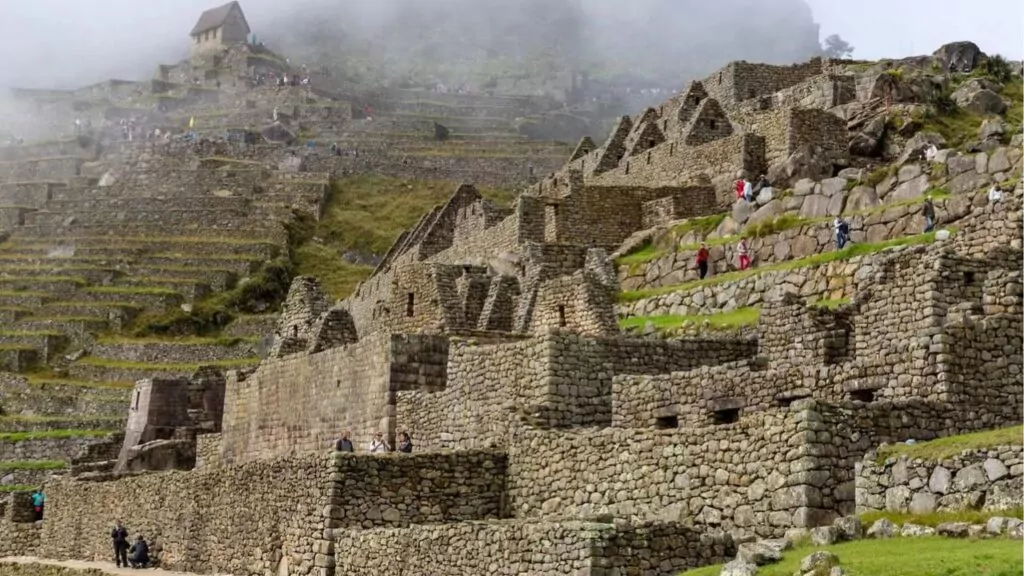
Hiking up to the ancient site is an adventure you won’t forget. It takes about 60 minutes to walk up, but it’s a path not advised during the wet months. You have choices, though! Trails like Inca Trail, Salkantay Trek, and others offer four to five days of walking.
Each path gives you different views and tests your strength in unique ways.
After reaching Machu Picchu by foot or bus, many visitors choose to explore deeper. Some climb Huayna Picchu or Machu Picchu Mountain for even more amazing sights.
Mastering the One-Day Trip: Lima to Machu Picchu
Planning a one-day trip from Lima to Machu Picchu sounds like a big adventure. You start by catching an early flight from Lima to Cusco, which takes around an hour and twenty minutes.
Airlines like LATAM, Jet Smart, and Sky Airlines fly this route often. Once in Cusco, you don’t stop; you head straight for the train station to board Peru Rail or the Hiram Bingham if you feel fancy.
These trains whisk you through breathtaking Andean landscapes all the way to Aguas Calientes, the closest town to Machu Picchu.
In Aguas Calientes, jump on one of the CONSETTUR buses that go up to Machu Picchu. They run frequently so there is no need to worry about timing too much. The bus zigzags up the mountain until you reach your destination: the ancient city of Machu Picchu.
Spend your day exploring this wonder of architecture and history but keep track of time! You have a return journey ahead that’s just as important as coming here—making sure you catch your train back to Cusco and then hop onto your flight back to Lima.
After such an epic day, next comes understanding each mode of travel in more detail.
Detailed Transportation Guide
For the trip from Lima to Machu Picchu, check out our detailed transportation guide. It packs all you need to know about flying, trains, and more into one handy spot! Keep reading to become a travel pro for this amazing adventure.
Flying from Lima to Cusco
Flying from the capital of Peru to Cusco is quick and not too costly. Planes do this in about 1 hour and 15 minutes. Ticket prices usually fall between 45 and 75 USD, which is a pretty good deal considering how far you’re traveling.
This option is great for travelers who don’t want to spend too much time on the road.
Traveling above the clouds cuts down on time and lets you witness some breathtaking views along the way.
Air travel also helps people avoid feeling sick from high places because it gets them there fast. Once you land in Cusco, adventures in the Andes Mountain Range or checking out Inca architecture are just around the corner.
Whether using ride-sharing apps like Uber or Cabify for city rides or hopping onto public transport, getting around after your flight is easy in Cusco.
Train to Machu Picchu from Cusco
Taking a train from Cusco to Machu Picchu is like stepping into a story. You leave the ancient city of Cusco, full of history and charm, and head towards Aguas Calientes, the gateway to Machu Picchu.
The journey itself is magical. It takes between 1.5 and 2 hours, but every second is worth it. You’ll see mountains, rivers, and forests through the windows.
Two main companies run trains on this route: Inca Rail and PeruRail. They offer different classes of service for all types of travelers. Whether you want luxury or simple comfort, they have options.
Also, starting your trip in Ollantaytambo instead of Cusco can make things easier because it’s closer to Machu Picchu. This means less time traveling and more time exploring!
Trekking to Machu Picchu: An Exploration
Walking to Machu Picchu is a big adventure. The paths, like the Inca Trail, Salkantay Trek, Inca Jungle Trek, or Lares Trek, take you through beautiful mountains and forests. You’ll see nature and old ruins along the way.
It’s best to walk these paths from May to September because it’s dry then. Walking lets you see places trains can’t go.
You need a few days for this trip. Start by getting used to the high places in Cusco or the Sacred Valley. This helps with altitude sickness. Bring water and wear good shoes. Also try coca tea; it helps too.
Each path has its own special views and stops, like ancient buildings or amazing lookouts over valleys. Choose your trek based on what you want to see and how long you want to walk. If you want you can also read- Puerto Rico Travel Warnings.
Discovering Lima
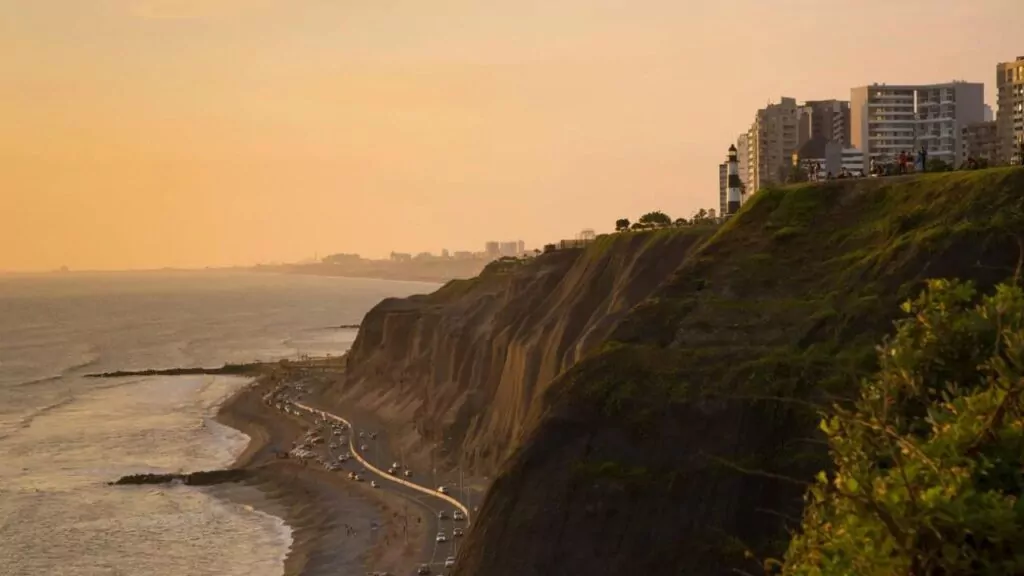
Lima is a city that surprises you. From its historic heart to its modern parts like Miraflores and Barranco, it’s a feast for the eyes and the stomach too, thanks to all those yummy Peruvian dishes.
The Historic Heart of Lima
The Historic Center of Lima is like stepping into a book of stories from the past. Around every corner, there’s something that catches your eye—old buildings, big squares, and streets that tell tales of days long gone.
The Plaza de Armas is the main spot where it all happens. Important locations like the Government Palace and the Cathedral of Lima surround it. These aren’t just any buildings; they’re pieces of history standing tall against time.
Next up, you can’t miss Miraflores and Barranco for another shade of Lima’s charm.
Exploring Miraflores and Barranco
Miraflores and Barranco are must-visits in Lima for anyone looking to catch a true taste of what the city offers. Miraflores shows off with its cliffs, giving stunning Pacific Ocean views, while Barranco charms with its artsy streets and historic buildings.
These spots are not just about pretty sights; they’re hotspots for foodies too. From local Peruvian flavors to international dishes, there’s something to satisfy every palate.
Walking through these districts feels like stepping into a vibrant world of culture and entertainment. Art enthusiasts will find plenty to admire in galleries scattered around, while lovers of history can explore landmarks up close.
For those who love shopping or just soaking in the atmosphere, there are trendy shops and lively street markets here too, making Miraflores and Barranco perfect stops on your Lima adventure.
Culinary Highlights of Lima
After soaking in the sights of Miraflores and Barranco, get ready for a feast. Lima’s food scene is like no other. The city serves up some of the best dishes in Peru, blending old traditions with new twists.
You won’t want to miss out on ceviche—fresh fish marinated in citrus juice. Or try lomo saltado, a stir-fry that mixes tender beef with veggies.
For those who love to explore with their taste buds, markets such as Mercado Central and Mercado Surquillo are must-visits. Here, you can find a variety of fresh ingredients that chefs use to create mouthwatering meals.
From spicy chilies to sweet fruits, these markets offer everything needed for Peruvian cooking. Whether you’re at a fancy restaurant or a simple street stand, Lima’s culinary world will impress you.
The Machu Picchu Experience
Stepping into Machu Picchu feels like walking into an ancient story. You’ll see old stone ruins, hike up tall mountains, and maybe join a tour to learn all its secrets.
Entry to Machu Picchu
To get into Machu Picchu, you can’t just show up at the entrance. First, buy your ticket online or in Cusco before making your way to Aguas Calientes. This small town is the last stop before Machu Picchu and no cars can go past this point.
From here, you have two options: take a short bus ride or hike a bit to reach the ruins.
The bus trip is quick and gets you there without much sweat. If hiking’s more your style, there’s a path that lets you walk right up to Machu Picchu—perfect for those wanting some exercise and great views on their way up.
Either way, once you’re at the top, be ready for breathtaking sights and lots of walking around this ancient city. Next up are guided tour options which help make sense of everything you see.
Guided Tour Options
Machu Picchu offers many ways to see its wonders. You can join group tours, get your own private guide, or pick a tour that starts early or late in the day. These choices show you the Sun Gate, Inca Trail, and more.
Folks who love history or nature might like tours focused on these topics. It’s smart to book these tours before your trip starts. This way, you’re sure not to miss out because of too many visitors.
Private guides give talks on the city’s past and point out hidden spots most travelers miss. Group walks are great for meeting others who love travel as much as you do. Early morning visits let you see sunlight light up the ruins—a sight that sticks with you forever! Booking ahead is wise during busy months; it helps keep your plans smooth.
Climbing Huayna Picchu or Machu Picchu Mountain
Climbing Huayna Picchu gives travelers a unique way to see the ancient ruins and stunning views. But, spots are limited each day. You need to book your climb ahead of time. The trail up is steep and takes about two hours to finish.
For those who love a challenge, Machu Picchu Mountain is another option. This path is longer and takes 3 to 4 hours but offers wider trails that are less steep.
Both hikes demand good walking shoes, hats for sun protection, and lots of water. No matter which one you pick, the journey will leave you with unforgettable sights of the landscape around these historic places.
Next up, let’s talk about what else you can find near Machu Picchu—like the beautiful Sacred Valley!
Beyond Machu Picchu: Nearby Attractions
After seeing Machu Picchu, there’s more to explore nearby! Places like the Sacred Valley will wow you. Here, you can visit cool spots like Ollantaytambo and see its old ruins. Don’t miss Moray with its amazing circular terraces or the salt flats in Maras.
These places are not just pretty but tell stories of long ago. So, keep your adventure going and check these out too!
The Sacred Valley’s Charm
The Sacred Valley is like a treasure chest, filled with ancient ruins and beautiful towns. It’s right near Cusco, making it easy to visit on your way to Machu Picchu. Think of Pisac with its amazing archaeological site, Urubamba town that feels like stepping back in time, and the famous salt mines of Maras.
These aren’t just any old places; they’re spots where history is alive under your feet.
In Ollantaytambo, you can walk among well-kept Inca remains while gazing at mountains all around. And then there’s Moray – ever heard of it? It’s this cool outdoor lab where the Incas played around with farming techniques using circular terraces, kinda like an ancient science experiment set in nature.
So yeah, the Sacred Valley isn’t just a stopover; it’s a deep dive into Peru’s past that will stick with you long after you’ve left.
Ollantaytambo’s Wonders
Journeying through the Sacred Valley, travelers find themselves drawn to Ollantaytambo. This small town is a treasure trove of well-kept Inca ruins and breathtaking landscapes. It stands out as a must-see for those visiting Machu Picchu, offering unique trekking experiences like the Inca Trail and Salkantay Trek.
Its streets echo with stories from the past, giving visitors a rare glimpse into Incan civilization’s brilliance.
Ollantaytambo serves not just as a historical site but also as a gateway to other marvels in the Sacred Valley such as Moray and Maras Salt Mines. Adventure seekers can embark on various treks that start here, each promising an unforgettable journey into nature and history.
The town itself is alive with cultural significance, making it more than just a stopover; it’s an essential part of any traveler’s itinerary who seeks to dive deep into Peru’s rich heritage.
The Ingenuity of Moray
Leaving Ollantaytambo’s wonders behind, the path leads us to another marvel of ancient engineering – Moray. This site is not your usual ruin; it’s a genius piece of agricultural technology.
Picture huge circular terraces carved into the earth, looking like an amphitheater designed by nature herself but crafted by human hands. Each level down gets its own climate, making it perfect for growing a ton of different crops.
The Incas used this spot as a lab to figure out the best ways to farm in tough places.
Moray stands out because it shows off just how smart Inca farmers were. They didn’t have modern tools or science books, but they understood how to work with nature to feed their people.
These terraces let them experiment and boost all sorts of plant life that wouldn’t usually grow together. It’s like having a greenhouse spread across multiple floors, each with its own settings for heat and humidity.
Here at Moray, every step you take down into those circles takes you through different worlds of farming magic that fed an empire.
The Salt Pans of Maras
The Salt Pans of Maras sit about one hour by car from Cusco or the Sacred Valley. This place shows off how people have made salt for a long time. You can see water flowing into pools and turning into salt under the sun.
The whole area shines with pink salt, which you can buy as a cool gift. Plus, the view of red mountains around makes it even more amazing.
Visiting here adds something special to your trip besides Machu Picchu. It’s part of exploring what this region offers in culture and nature. People who come here get to see more than just old ruins; they experience how locals use clever ways to make everyday things like salt.
Journey Tips: Lima to Machu Picchu
Ready for a trip from Lima to Machu Picchu? Here are some quick tips. First, get used to the high lands slowly. Your body needs time. Next, book your tickets early. Planes, trains, and entry passes sell out fast! Best times to visit? Aim for April through October – less rain, more fun.
Always stay hydrated and pack light but smart – think comfy shoes and layers. Enjoy the adventure!
Adapting to High Altitudes
Going up high in the mountains, like to Machu Picchu, means you’ll be way above sea level. Your body needs time to get used to less oxygen up there. A smart move is taking the bus trip from Lima to Cusco since it helps your body adjust slowly.
Drink lots of water and take it easy for the first few days. This lets your body get ready without getting sick.
Eating light meals can also help your stomach not feel upset while you’re getting used to the altitude. If you rush and try a one-day trip straight from Lima, you might end up feeling really bad because your body didn’t have enough time to acclimate.
Slow and steady wins this race, making sure your adventure doesn’t turn into a headache—literally!
Advance Bookings
Booking your trip early is key. Airlines like LATAM, Jet Smart, and Sky Airlines offer flights from Lima to Cusco. These plane rides are quick, only about an hour and twenty minutes.
Still, tickets can get pricey as the travel date gets closer. To save some cash and stress, it’s smart to grab those seats ahead of time.
For the train ride from Cusco to Machu Picchu, Peru Rail and Inca Rail are your go-to choices. They have different types of comfort on board their trains. Since these tracks see a lot of travelers eager to explore Machu Picchu, spots fill up fast especially during the dry season from May to September which is perfect for visiting.
Securing these train tickets early ensures you don’t miss out on one of the most scenic journeys in Peru due to a sold-out sign.
Optimal Times for Visiting Lima and Machu Picchu
The dry season from May to September is the best time to visit Lima and Machu Picchu. Skies are clear, making it great for sightseeing and taking photos. It’s also easier to hike. But, June and July are super busy because many travelers want to see Machu Picchu.
So, it’s smart to book your trip early if you’re planning during these months.
Lima has cool stuff like pre-Columbian art and tasty food with Peruvian ingredients all year round. But seeing the city without rain makes everything better. Remember, while exploring ancient Inka sites or enjoying a pisco sour in Lima, the weather can make a big difference in your experience!
Final Words
So, Lima and Machu Picchu? Far but oh, so worth the trek. With planes, trains, buses, and hikes to choose from, you’ve got options on how to make the journey from Peru’s bustling capital city to the awe of ancient ruins.
A bit over 500 km straight up if you could fly like a bird, but a road trip turns into an adventure covering more than a thousand kilometers through some stunning sights. Whether it’s your first time or you’re back for more, each trip feels like uncovering a new secret of these historical gems.
Sure beats staying at home!

